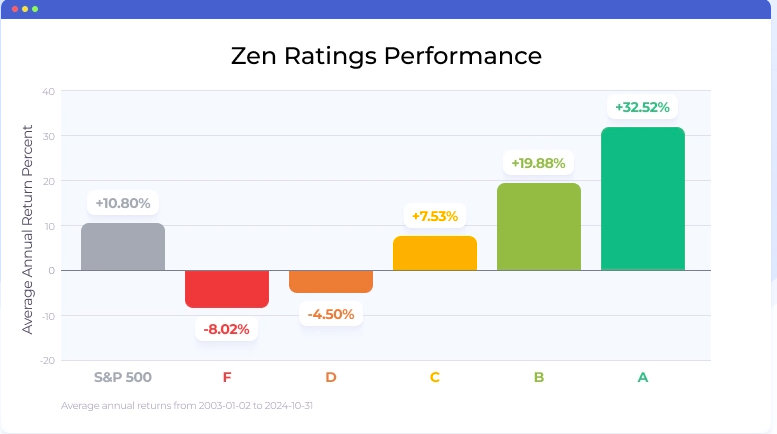20 Great Reasons For Selecting AI Stock Picker Analysis Sites
20 Great Reasons For Selecting AI Stock Picker Analysis Sites
Blog Article
Top 10 Tips On How To Assess The Integration Of Ai Stock-Predicting/Analyzing Platforms And Their Compatibility
AI stock predicting/analyzing platforms must be compatible and seamless with your existing systems, tools, and workflows. Platforms that are compatible with the existing workflows, tools, and systems can enhance efficiency and productivity. Here are the top ten suggestions for assessing integration and compatibility.
1. Check Brokerage Integration
Check that your platform works seamlessly with the trading or brokerage service you want.
Trade execution: Check if the platform allows direct trade execution using the integrated broker.
Account synchronization: Check that the platform is able to update in real-time balances and positions of your account and transaction history.
2. Examine API Accessibility
API access: Ensure the platform offers an API (Application Programming Interface) that allows developers to develop customized tools or automate workflows.
API documentation: Make sure that the API is well-documented and includes explicit examples and cases of use.
Rate limits: Determine if the API has reasonable rates and can handle your expected use.
3. Review the integration of third parties
Popular Tools: Make sure the platform integrates with other tools, such as Google Sheets and Excel.
Import and export of data. Check that the platform is able to import and export data easily from other tools.
Extensions or plugins: Check the platform is able to support extensions or plugins. These add functionality.
4. Test Compatibility with Operating Systems
Desktop compatibility is important. Check that your system works on the operating system you prefer (Windows MacOS Linux).
Mobile compatibility - Look to see if your platform has a mobile app that is compatible with iOS and Android.
Access via the internet (for greater flexibility) Verify that the platform can be accessed via the web browser.
5. Examine Data Integration Capabilities
Data sources: Make sure the platform is able to integrate with multiple data sources (e.g., market data providers, news feeds, sentiment on social media).
Real-time data streams: Ensure that the platform is able to integrate real-time information for up-todate analyses.
Make sure that your platform supports historical data importation to analyze or backtest.
6. Check compatibility with cloud and on-premise
Cloud-based platforms : the platform is accessible from any location with internet connectivity.
On-premise Solutions: If you would like to run your application on premises ensure the platform you choose to use is compatible.
Find hybrid solutions. This is a model that combines cloud and on-premises features.
7. Check for Cross Platform Syncronization
Device synchronization. Make sure that settings and data are synced across all platforms (desktops tablets and mobiles).
Real-time updates: Check if the changes made to one device are immediately reflected on others.
Check the platform to see if it allows access to functionality or data when you are offline.
8. Evaluate Compatibility with Trading Strategies
Algorithmic or automated trading: Ensure that the trading platform supports these strategies.
Custom indicators: Find out if you can utilize customized indicators or scripts.
Strategy backtesting. Check whether the platform supports backtesting strategies based on previous data.
9. Examine Security and Compliance
Data encryption: Ensure that the platform uses encryption for data in transit and in rest.
Verify that the platform has safe authentication methods for example, two-factor authentication.
Regulatory compliance: Verify that the platform is compliant with relevant laws (e.g. GDPR, FINRA or SEC).
10. Test Scalability, Performance, and Efficiency
Scalability: Ensure that the platform can handle growing amounts of users and data as the demands of your business increase.
Performance during load: Check whether the platform performs well in volatile markets.
Utilization of resources: Make sure your platform makes the most efficient utilization of resources in the system such as memory, CPU and bandwidth.
Bonus Tips
Feedback from users: Read user testimonials and reviews to assess the platform's ability to integrate.
Trial period: Test the platform free of charge or download a demo to test how it works with your existing tools and workflows.
Customer support: Ensure that the platform provides a solid assistance in the event of integration issues.
If you follow these guidelines you will be able to assess the compatibility and integration of AI stock predicting/analyzing trading platforms, ensuring they work seamlessly with your existing systems and enhance your trading efficiency. Take a look at the top more info on ai for trading for more recommendations including ai stock trading bot free, ai for trading, ai for stock predictions, ai stock trading, market ai, ai trading tools, chatgpt copyright, ai chart analysis, ai investing app, best ai stock and more.
Top 10 Tips For Assessing The Risk Management Of Ai Stock Predicting/Analyzing Trading Platforms
A trading platform that utilizes AI to forecast or analyze stocks must have a solid risk management system. This will safeguard your capital investment and limit any losses that could occur. A platform that is equipped with powerful tools for managing risk can assist you in navigating volatile markets and allow you to make informed decisions. Below are the top 10 tips to evaluate the risk management capabilities of these platforms.
1. Examining Stop-Loss or Take Profit Features
Level that you can customize: You should be able customize the levels of take-profit and stop-loss for individual trades and strategies.
Make sure that your trading platform supports trailing stop, which adjusts automatically when the market shifts towards your.
Find out if your platform permits you to place stop-loss orders that guarantee the closing of the trade at the price you have specified, even in unstable markets.
2. Useful Tools for Assessing Position Size
Fixed amount: Ensure the platform permits you to define position sizes based on a fixed monetary amount.
Percentage of portfolio: Determine whether you can establish position sizes in percentages of your total portfolio to reduce risk proportionally.
Risk-reward percentage: Examine whether you are able to define the risk-reward percentages for specific trades or strategies.
3. Make sure you have Diversification Support
Multi-assets trading: Make sure that the platform can support trading across different asset categories (e.g. stocks, ETFs options, forex and more.) to diversify portfolios.
Sector allocation: Verify whether the platform has tools to monitor and manage sector exposure.
Geographic diversification: Make sure that the platform supports trading in international markets in order to spread geographical risk.
4. Review the margin and leverage controls
Margin requirements: Ensure the platform clearly discloses margin requirements for trading leveraged.
Limits on leverage: See if the platform allows you to set limits on leverage to limit the risk exposure.
Margin calls: Make sure you are receiving timely notifications from the platform in order to avoid account liquidation.
5. Assessment and Reporting of Risk
Risk metrics - Make sure that your platform has key risk metrics such as the Sharpe ratio (or Value at Risk (VaR)) or drawdown (or value of the portfolio).
Scenario assessment: Find out whether you can simulate various market scenarios using the platform in order to determine possible risks.
Performance reports: Find out whether you can obtain detailed reports on performance from the platform, which include the risk-adjusted outcomes.
6. Check for Real-Time Risk Monitoring
Portfolio monitoring: Make sure the platform allows you to monitor your portfolio in real-time.
Alerts and notifications: Determine if the platform provides real-time alerts for risks-related events (e.g. margin breaches and stop-loss triggers).
Risk dashboards: Find out if the platform offers customizable risk dashboards for an extensive overview of your risk profile.
7. Assess the effects of stress testing and backtesting
Stress testing: Make sure that the platform permits you to stress-test your portfolios or strategies during extreme market conditions.
Backtesting - See the platform you use allows you to backtest strategies with previous information. This is a great method to gauge the risk and evaluate performance.
Monte Carlo simulations: Verify whether the platform utilizes Monte Carlo simulations to model possible outcomes and assess the risk.
8. Risk Management Regulations - Assess Compliance
Check for regulatory compliance: Verify that the platform's compliance with the applicable Risk Management Regulations (e.g. MiFID II for Europe, Reg T for the U.S.).
Best execution: Check if the platform is following the top execution procedure, which makes sure that trades are carried out at the best price in order to minimize any slippage.
Transparency Check the platform's transparency and clarity in risk disclosure.
9. Check for User-Controlled Risk Parameters
Custom risk rules: Make sure the platform you select permits you to develop unique risk management guidelines.
Automated risk management: Make sure that the platform is able to enforce risk management rules automatically, based on your predefined guidelines.
Manual overrides: Make sure that your platform allows manual overrides in emergencies.
10. Review User Feedback and Case Studies
Review by users: Conduct user research to assess the platform’s effectiveness for risk management.
Case studies Find case studies or testimonials that show the ability of the platform to manage risks.
Community forums: Find out whether the platform has an active user community where traders share risk management tips and strategies.
Bonus Tips:
Free trial period: Test the risk management features of the platform using real-world scenarios.
Support for customers: Ensure whether the platform offers robust support in relation to issues or questions relating to risk management.
Educational sources: Find out whether your platform has tutorials or educational materials that explain risk management practices.
These tips will help you determine the risk management capabilities of AI stock-predicting/analyzing trading platforms. This way you'll be able pick a platform that safeguards your capital and limits potential losses. Tools for managing risk that are reliable are essential for trading in unstable markets. Have a look at the top your input here about ai stock trader for more recommendations including ai share trading, free ai tool for stock market india, free ai tool for stock market india, best ai stock prediction, stocks ai, can ai predict stock market, how to use ai for copyright trading, ai share trading, ai for trading stocks, ai stock predictions and more.